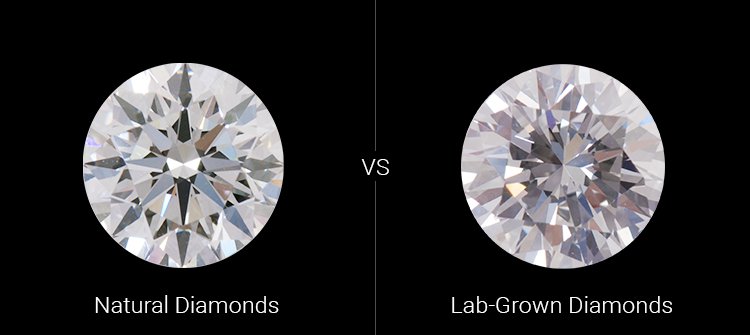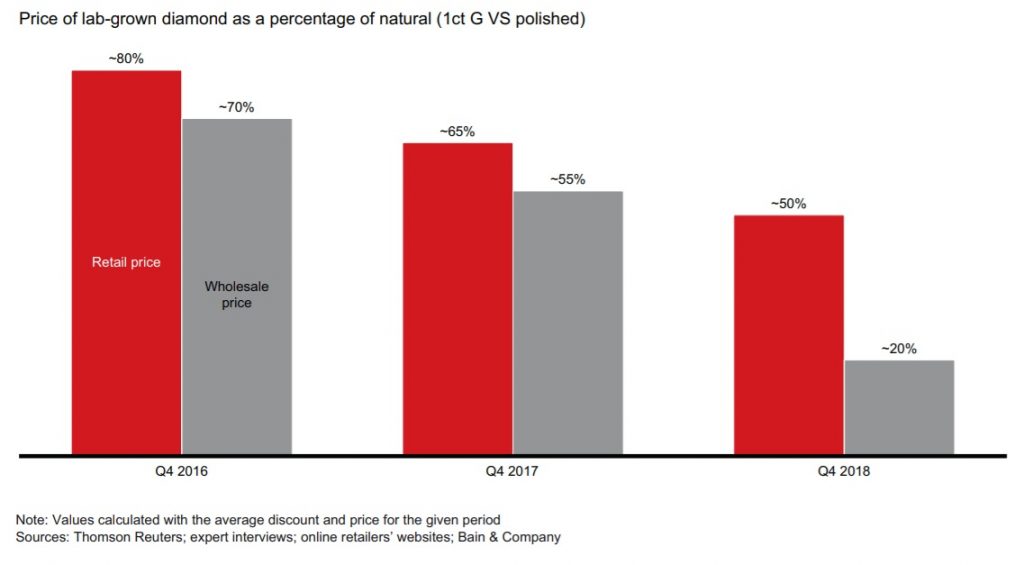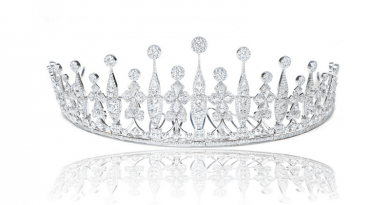A New Era for Sustainability in the Diamond Industry
A New Era for Sustainability in the Diamond Industry
The diamond industry continues to expand its horizons by implementing sustainable ways to not only converse the environment, but also gems in a productive manner. There have been many businesses and organizations within this industry that make it imperative to practice sustainability, yet still produce the best quality diamonds possible.

One way that businesses have been successfully environmentally friendly is by participating in the lab-grown diamond industry. What exactly is a lab-grown diamond?
Well, these particular diamonds are produced inside a lab using cutting-edge technology that replicates the natural diamond growing process. These diamonds are considered to be “man-made”, but contains the same chemical, physical, and optical characteristics that a natural diamond would. Due to being synthetically produced in a lab, while not exactly accurate, lab-created diamonds have a bad reputation of being believed to be “fake”. There are two processes that are used when creating these diamonds, High Pressure-High Temperature and Chemical Vapor Decomposition. These diamonds are graded and certified using the same process as minded diamonds using the 4c’s – cut, clarity, color, and carat. (Clean Origin).
There are multiple benefits to using lab-grown diamonds – they are less expensive, are ethical, and environmentally friendly.

Similar to natural diamonds, the prices of lab-created diamonds fluctuate greatly. A lab-grown diamond can be up to 20-40% less expensive than a natural diamond. The lab-created stone costs approximately $3,640, while the natural diamond costs approximately $5,280. There are many factors that can influence the pricing of diamonds – shape, cut, carat weight, color, clarity, and certification (“Lab-Created Diamonds: Prices & Value”).
As generations evolve, their stance on sustainability continues to influence their purchases. Young consumers are drawn to lab-grown diamonds due to the price, transparency, and environmental reasons, causing a shift from Type II A mined diamonds to lab-grown diamonds. Millennials and Generation Z are moving away from conventional diamonds, with “nearly 70% of millennials considering buying a lab grown alternative” (“The Sparkling Rise of the Lab Grown Diamond).
A benefit of lab-grown diamonds is the potential for it to be available all seasons due to not needing a certain environment for their growth. Labs also have the ability to produce Type II A diamonds. These are qualified to be a high class of diamonds, such as Cullinan, Kohinoor, and Lesedi La Rona. There are many types of diamonds that can be produced from the lab:
Cultured Diamonds – created from scratch and built in environment similar to the environment of diamond mines.
HPHT Diamonds – high pressure, high temperature diamonds made in an environment similar to diamond mines
CVD Diamonds – hydrocarbon gas mixture in chemical vapor deposition method.
(Grown Diamond Corporation)

The Diamond Foundry, Debeers’ own fund of lab-grown diamonds, has taken advantage of the elements that are offered through these particular diamonds. In May of 2018, the company announced that it would ” start selling man-made diamond jewelry at a fraction of the price of mined gems, marking a historic shift for the world’s biggest diamond miner, which vowed for years that it wouldn’t sell stones created in laboratories. The strategy is designed to undercut rival lab-diamond makers, who having been trying to make inroads into the $80 billion gem industry” (“De Beers to Sell Diamonds Made in a Lab”). Their diamonds are made with no mining, no carbon footprint, no harm towards wildlife, and pollution of any kind, and no destruction of communities. They are 100% powered by Washington State’s Columbia River, and only mission is to focus on simply diamonds. Each diamond is made in its own unique way, with one-of-a-kind inclusions and growth patterns.
Many other companies have transitioned to solely focusing on lab-grown diamonds. Brilliant Earth allows customers to customize their own engagement rings that they grow themselves, allowing to pick from shape to carat. Another company that support lab-grown diamonds is JEM. It is the first Paris-based ethical jewelry brand that guarantees social responsibility, environmental awareness, and transparency (“6 Jewelry Brands with 100% Conflict-Free Lab-Grown Diamonds”).
However, there have been warnings regarding falsifying reports on the status and condition of the lab-grown diamonds. The “FTC has warned lab-grown diamond producers about making false claims of positive environmental impacts around their processes, as they are often energy-intensive operations” (“How Brands Like Kimai Are Finding Success With Lab-Grown Diamonds“).
It’s important to continue to the emphasize the importance of sustainability within an industry and how it can impact it in both a negative and positive manner. Companies are evolving and revolutionizing themselves by implementing lab-grown diamonds within their industry instead of continuing to support the effort of mining for these gems. Great ways to become educated and informed on the refinement of the jewelry industry is in attending sessions where professionals speak about their role in the industry, and ways to continue to improve it. Last year, Narcisa Pheres attended the GIA symposium with over 750 professions from diamond and jewelry industry gathered in Carlsbad to discuss the future of the industry and the future of lab grown diamonds. GIA has been grading laboratory-grown diamonds since 2007. Their Laboratory-Grown Diamond Report includes the standard GIA color, clarity and cut grading scales for reference purposes. These reports include descriptive terms to help identify the color and clarity, as well as the growth process that took place during the creation of lab-grown diamonds (“Does GIA Grade Laboratory-Grown Diamonds?”).
Narcisa Pheres, an industry expert with over two decades of experience in the diamond industry says, “I don’t see lab grown diamonds being a competitor of natural diamonds. It’s an completely different proposition! In fact, I rather see them as a competition to Swarovski. The only time they may be in competition entirely with diamonds is when it comes to melee size diamonds, not anything above 1ct.” She believes purchasing a diamond of a significant size is always an emotional decision. She further states that “It’s the uniqueness that attracts. More and more accessories and costume design jewelry will use lab-grown diamonds. It’s more sustainable and can offer very good color and clarity for a decent price. However, let’s not forget that a big portion of the diamond prices is due to cutting and polishing. Both natural and lab-grown diamond cost the same to cut and polish”.
The diamond industry is becoming more fast paced with the trends that are continuously causing its evolution. The lab-grown diamond has made a beneficial impact for companies by expanding their market into different directions. It is essential to be knowledgeable as much as possible within your industry, especially when any trend can impact it in an instant.





